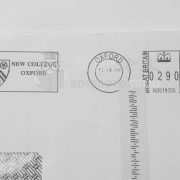爱尔兰材料科学论文代写: 抗震测试
爱尔兰材料科学论文代写: 抗震测试
在日本筑波NIED的实验室中,使用了三层住宅单元的模型,并对其进行了测试,测试结果表明CLT制成的结构能够稳定地抵抗十五次严重地震而不会对建筑物本身造成实质性伤害。被测试的模型建筑的崩溃点被定义为至少有一个压制锚失效的情况。在最后一个试验阶段,当模型受到“Nocera Umbra”地震载荷的影响,并伴有1.2g的地面峰值加速度(PGA)时,达到了这一崩溃点。继续进行测试程序,对成员连接进行了测试,并对CLT墙板进行了平面内循环测试,并提供各种不同布局的开口和连接。在三个独特的设计中对单层三维样本进行伪动态测试,并对宽度和宽度等于7米,高程等于10米的建筑平面图进行振动台测试。该标本遭受了一系列地震并且接近尾声;在7层高的CLT大楼上进行了最大振动台试验。 (Popovski等,2010)
爱尔兰材料科学论文代写: 抗震测试
此外,该模型还进行了振动台测试的测试,以观察其在地震情况下的性能。这个实验模型是使用软件程序DRAIN 3-DX准备的。发现在分析预测和实时观察结果之间存在关联。在这里,经过验证的分析预测使用了各种非线性时间历史记录类型和8个历史地震记录。 (Popovski等,2010)
爱尔兰材料科学论文代写: 抗震测试
In the laboratories of NIED in Tsukuba (Japan), a model of triple storey residential unit was used, and test was conducted on it which determined that the structures made out of CLT could stand stable against fifteen severe earthquakes without substantial harm to the building itself. The point of collapse of the model building under test was defined as the situation in which at least one hold-down anchor failed. This collapse point was reached during the last test stage when the model was subjected to “Nocera Umbra” earthquake load accompanied with peak ground acceleration (PGA) of 1.2g. In continuation to the testing programs, the member connections were tested and in-plane cyclic tests were performed on CLT wall panels with a range of varied layouts of openings and links. Pseudo-Dynamic tests were conducted over single storey three dimensional specimens in three distinguished designs and shaking table test was performed on a building plan with breadth and width equal to 7 meters and the elevation equal to 10 meters. The specimen was subjected to a range of earthquakes and towards the end; a maximum shaking table test was carried out over the 7 storey CLT building. (Popovski et al., 2010)
爱尔兰材料科学论文代写: 抗震测试
Furthermore, the model was also tested for the shaking table tests to observe its performance under earthquake situation. This experimental model was prepared using the software program DRAIN 3-DX. A link was found to exist in between the analytical forecast and the real time observation results. Here, the proved analytical forecasting used various non-linear types of time-history records and eight historic earthquake records were tried on it. (Popovski et al., 2010)







